Last Saturday morning Jill and I drove the 21 miles to attend the Antelope Island Balloon and Kite Stampede. However, uncooperative winds dictated that no hot air balloons would launch that day. Balloons launched the day before but that didn’t help me get the pictures I wanted. We left but returned in the evening with Steven and his family. Driving over the causeway always reminds me of the flooding that destroyed the original road to the island. More about that later. On the island there was still no balloon launches so we made do with kites, food, music, and test burns.
The Causeway
The Davis County Causeway is a 7.25 mile earthen dike and roadway leading from the mainland to Antelope Island. The original causeway, constructed in 1969 by the State of Utah, was washed out frequently by heavy wave action in the early 70’s but was raised slightly and reopened each time. By 1985 the causeway was completely under water due to the relentless rise of the lake.
As the lake began to recede in the late 80’s the causeway reemerged. It was in poor condition and needed extensive work. Davis County officials together with State Parks personnel lobbied the Utah State Legislature in 1990 for funding to rebuild the causeway so that Antelope Island State Park could again be opened to the public. Eventually the legislature agreed to give the causeway to Davis County along with $4 million for rebuilding and repairs. Another $500,000 was appropriated in 1992 and the County rebuilt the causeway in 1993 for a total cost of $5 million. Davis County charges a $2 per vehicle toll (included in your entrance fee) on the causeway to help pay for ongoing maintenance costs and to set aside a fund to deal with possible future damage should the lake rise again.
Flag Ceremony with Sky Divers
We enjoyed watching the sky divers in the morning. It reminded me of Jake’s escapade last month. Click the photographs to enlarge.
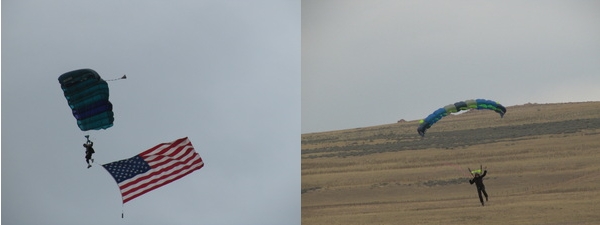
Aurora
Aurora, our granddaughter, was with us. She didn’t care if there were balloons or not. But watching all the other activity can make a girl a little thirsty.
Kites
Kites were used approximately 2,800 years ago in China, where materials ideal for kite building were readily available: silk fabric for sail material; fine high-tensile-strength silk for flying line; and resilient bamboo for a strong, lightweight framework. It is speculated that leaf kites existed far before that time in what is now Indonesia, based on an interpretation of cave paintings on Muna Island off Sulawesi. The kite was said to be the invention of the famous 5th century BC Chinese philosophers Mozi and Lu Ban.
By at least 549 AD paper kites were being flown, as it was recorded in that year a paper kite was used as a message for a rescue mission. Ancient and medieval Chinese sources list other uses of kites for measuring distances, testing the wind, lifting men, signaling, and communication for military operations. The earliest known Chinese kites were flat (not bowed) and often rectangular. Later, tailless kites incorporated a stabilizing bowline. Kites were decorated with mythological motifs and legendary figures; some were fitted with strings and whistles to make musical sounds while flying (Wikipedia).
There were all kinds of kites in the air to keep us entertained. But we were content enough to just visit with Steven, Adelaide, and Aurora. Nice family. Click the individual kites to enlarge.
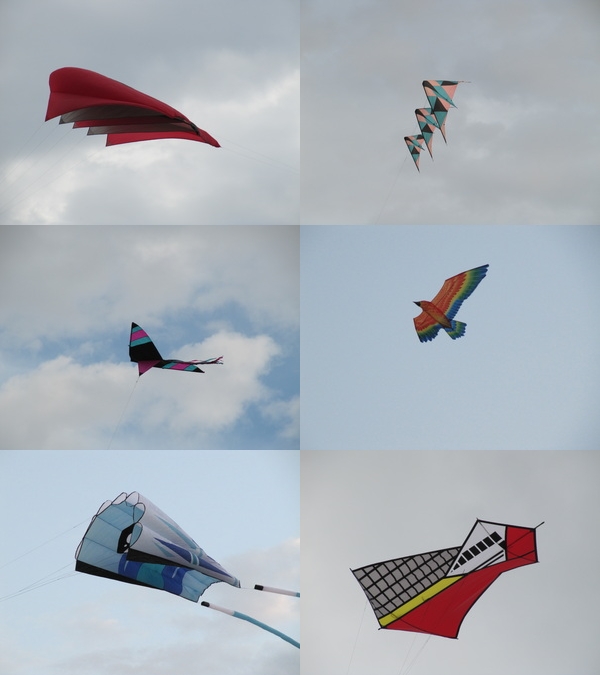
Hot Air Balloons
Unmanned hot air balloons are popular in Chinese history. Zhuge Liang of the Shu Han kingdom, in the Three Kingdoms era (220–80 AD) used airborne Kongming lanterns for military signaling. There is also some speculation that hot air balloons could have been used by people of the Nazca culture of Peru some 1500 years ago, as a tool for designing the famous Nazca ground figures and lines. The first documented balloon flight in Europe was by the Portuguese priest Bartolomeu de Gusmão. On August 8, 1709, in Lisbon, Bartolomeu de Gusmão managed to lift a small balloon made of paper full of hot air about 4 meters in front of king John V and the Portuguese court.
The first clearly recorded instance of a balloon carrying passengers used hot air to generate buoyancy and was built by the brothers Joseph-Michel and Jacques-Etienne Montgolfier in Annonay, France. The first tethered balloon flight with humans on board took place on October 19, 1783 with the scientist Jean-François Pilâtre de Rozier, the manufacture manager, Jean-Baptiste Réveillon and Giroud de Villette, at the Folie Titon in Paris. The first free flight with human passengers was on November 21, 1783. King Louis XVI had originally decreed that condemned criminals would be the first pilots, but de Rozier, along with Marquis Francois d’Arlandes, successfully petitioned for the honor (Wikipedia).
As I already said, no balloons got off the ground on Saturday, but that allowed an opportunity to closely examine the basket and burners. In the photograph below, the balloon basket is laying on its side so that we get a good view of the burners. The burner unit gasifies liquid propane, mixes it with air, ignites the mixture, and directs the flame and exhaust into the mouth of the envelope. Burners vary in power output; each will generally produce 7 to 10 million BTUs per hour. The pilot actuates a burner by opening a propane valve, called a blast valve. The valve may be spring loaded so that it closes automatically, or it may stay open until closed by the pilot. The burner has a pilot light to ignite the propane and air mixture. The pilot light may be lit by the pilot with an external device, such as a flint striker or a lighter, or with a built-in piezo electric spark.
Test Burn
It wasn’t really a test burn but more to entertain the crowd. After dark, five of the balloons lined their baskets in a row and did a test burn in unison and then alternating. It was interesting to watch and the children had a blast. Some got a turn at the controls.
It’s All Over
It was a pleasant evening but it eventually came to an end. Better luck next year on seeing a few balloons in the air. The kites are still flying but the sun is setting. Time to head home.
.
From Other Blogs
Antelope Island Balloon Festival
Antelope Island Balloon and Kite Festival
6 Minute Window



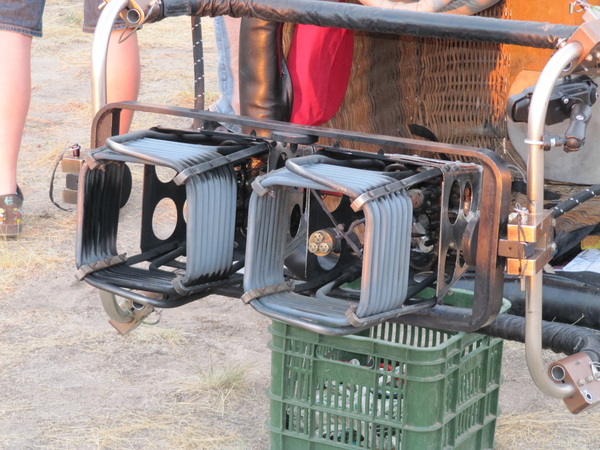
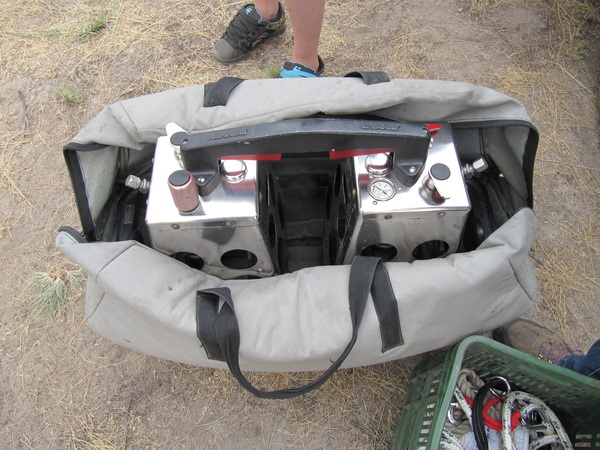
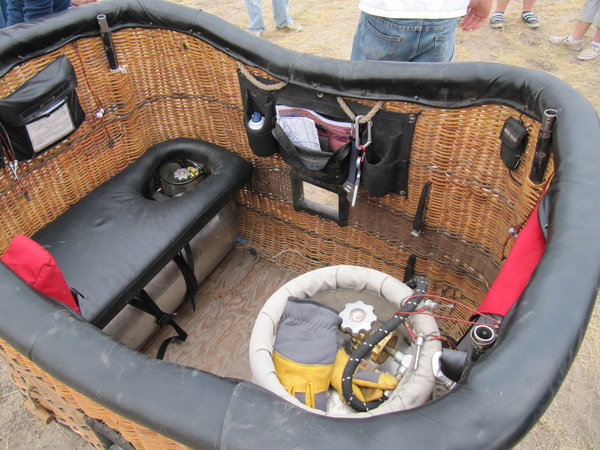
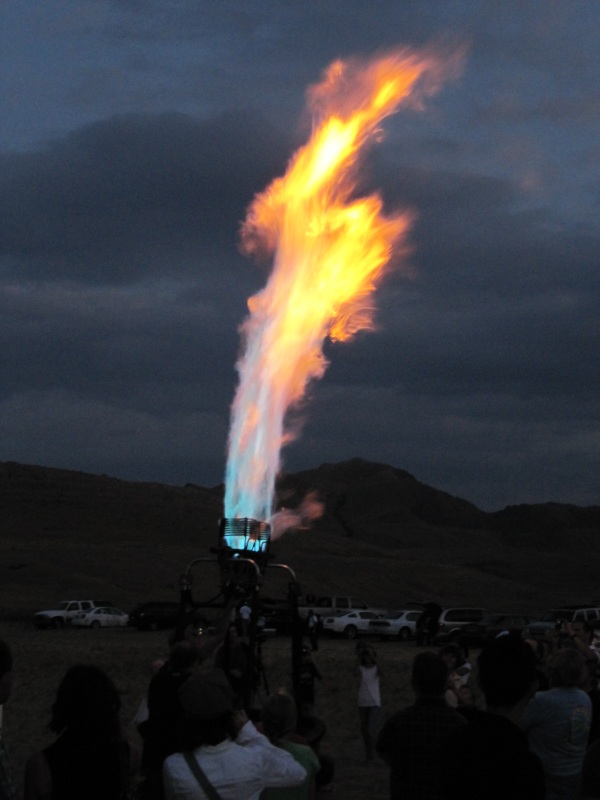
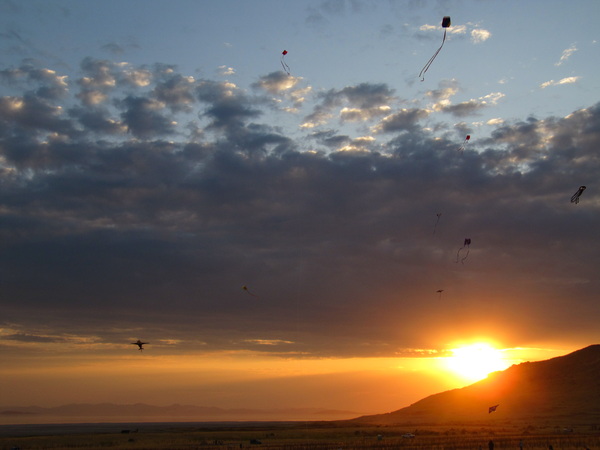
Fantastic images !! Great work !!
Nuno